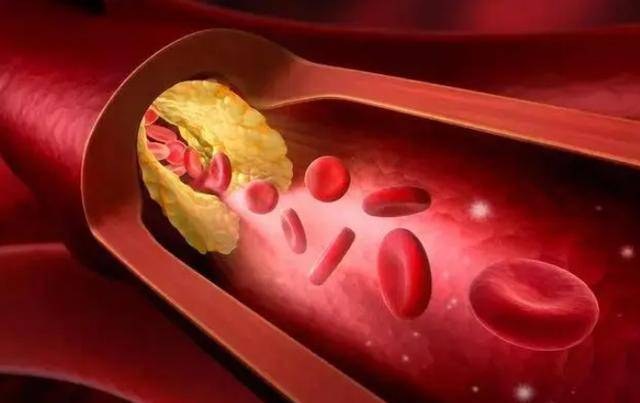Many patients claim to be in good health, never taking medication or getting injections all year round, but strangely, their blood test results are always high.
Some people may have their total cholesterol levels rise to 10.1, with LDL cholesterol levels reaching 7.5 without their knowledge, because most people don’t go to the hospital unless they have symptoms.
01
What symptoms do people with high blood lipids experience?
People with high blood lipids may experience various symptoms, but it is important to note that many patients with high blood lipids may not show obvious symptoms early on and are only diagnosed through blood tests.
Dizziness: Patients with high blood lipids often experience dizziness, mainly due to the increased blood viscosity and slowed blood flow resulting in inadequate blood supply to the brain, leading to cerebral ischemia or hypoxia.
Headache: Some patients may experience headaches, possibly due to large fluctuations in blood pressure, cerebral atherosclerosis, or insufficient blood supply to the brain, causing cerebral ischemia, hypoxia, or increased intracranial pressure.
Chest tightness, fatigue: Patients with high blood lipids may also experience chest tightness and fatigue, mostly due to coronary artery sclerosis leading to myocardial ischemia and hypoxia.
Drowsiness after meals: After eating, blood tends to pool in the stomach, reducing blood flow to the brain. Patients with high blood lipids already have poor blood flow, making them more prone to cerebral hypoxia after meals, resulting in drowsiness.
Blurred vision: High blood lipids can affect blood circulation, causing insufficient blood supply to the eyes and resulting in blurred vision.
Xanthoma: Some patients with high blood lipids may develop xanthomas on the eyelids, palms, tendons, etc., due to lipid deposition in the local skin, presenting as yellow or orange plaques or nodules.
Other symptoms: High blood lipids can also cause limb numbness, early corneal necrosis, hepatosplenomegaly, obesity, forgetfulness, chest pain, fatigue, weakness, etc. Obesity is a common accompanying symptom of high blood lipids because patients with high blood lipids often have increased fat tissue in their bodies.
02
For people with high blood lipids, can they eat pig’s trotters, eggs, and milk? Doctors provide the answers
Pig’s trotters
It is not recommended for people with high blood lipids to eat pig’s trotters because they contain a high amount of fat and cholesterol, typically between 15% to 20%, and also contain a significant amount of cholesterol.
For individuals with high blood lipids, consuming foods high in fat and cholesterol can further elevate blood lipid levels, so it is not advisable to eat pig’s trotters frequently.
Eggs
People with high blood lipids can eat eggs moderately, but they should control the intake of egg yolks. Eggs are an important source of high-quality protein and contain various vitamins and minerals.
Although egg yolks contain cholesterol, studies have shown that for most people, moderate egg consumption does not significantly increase cholesterol levels in the blood.
However, for patients with high cholesterol levels, it is advisable to avoid excessive consumption of egg yolks because they have high cholesterol content.
Milk
People with high blood lipids can consume milk, but it is recommended to choose low-fat or skim milk. Milk is rich in protein, calcium, vitamin D, and other nutrients beneficial for bone health.
Whole milk contains a certain amount of fat, but individuals with high blood lipids can reduce fat intake by opting for low-fat or skim milk to prevent an increase in blood lipid levels.
03
For individuals with high blood lipids, attention should be paid to diet; here are 4 key points to remember
Control total calorie and fat intake:
Patients with high blood lipids should control their daily calorie intake to avoid fat accumulation due to excess energy. Strictly limit the intake of high-fat foods like animal offal, fatty meat, deep-fried foods, which contain high saturated fatty acids and cholesterol, exacerbating blood lipid abnormalities.
Increase dietary fiber intake:
Eat more fiber-rich foods like vegetables, fruits, whole grains, which help reduce blood lipid levels. Dietary fiber promotes bowel movements, aids in lipid breakdown and excretion, and reduces cholesterol absorption.
Consume adequate high-quality protein:
Choose foods rich in high-quality protein like lean meat, fish, soy products, which provide necessary nutrients without significantly increasing blood lipid levels. Control protein intake to avoid excess energy intake.
Limit salt and sugar intake:
Patients with high blood lipids often have accompanying metabolic disorders like hypertension and hyperglycemia, so salt and sugar intake should be restricted. Excessive salt intake increases the risk of elevated blood pressure, while excess sugar intake can be converted into fat stores, aggravating blood lipid abnormalities.
04
Can blood lipids be reduced without medication?
For individuals with slightly elevated blood lipid levels and no other obvious discomfort, non-drug treatment methods can assist in lowering blood lipids. These methods mainly include dietary adjustments, increased exercise, and lifestyle improvements.
Diet adjustment: Control fat intake in the diet, especially saturated and trans fats; eat more vegetables, fruits, whole grains, and healthy fats (like olive oil, fish oil) to lower blood lipids.
Increased exercise: Regular aerobic exercise such as brisk walking, running, swimming accelerates fat burning and lowers blood lipids. Additionally, moderate muscle exercise helps raise the body’s metabolic rate.
Lifestyle improvement: Quit smoking, limit alcohol, get adequate sleep, avoid excessive fatigue and mental stress, and other unhealthy habits help regulate blood lipids.
However, if blood lipid levels remain high or cannot be lowered effectively through non-drug treatments, medication therapy may need to be considered.
There are various types of lipid-lowering drugs, including statins, fibrates, etc., which, when used under a doctor’s guidance, can effectively lower blood lipid levels.


